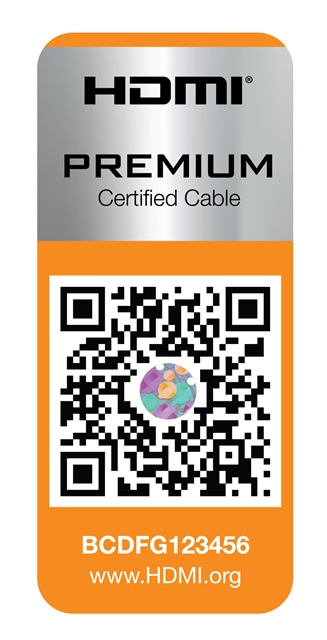I think it’s safe to say that most consumers don’t buy home entertainment centers so they can learn how to troubleshoot electronics. And with more and more 4K/UltraHD TVs and content becoming available, it’s likely that consumers will want to upgrade their systems without a hassle, so they can quickly and easily experience the impressive performance improvement 4K can bring. So what they’ll want is an easy, safe upgrade path, not a course in high-speed digital data transport.
HDMI Licensing, LLC, is the organization responsible for all licensing of the HDMI Standard, and for managing all compliance issues. Recognizing the need to make it easy for consumers to enjoy all the benefits of 4K/UltraHD, the organization created the new Premium High Speed HDMI Cable Program to provide a well-controlled rollout of cables based on the new HDMI 2.0 cable specification (which supports 4K/UltraHD) by participating cable manufacturers. The idea is that, by using such cables, consumers will be able to interconnect the components of their 4K systems without having to worry about the cable’s performance. “Our aim is to just let consumers enjoy 4K content,” notes the new president of HDMI Licensing, LLC, Rob Tobias. And Jeff Park, HDMI Licensing, LLC’s Technology Evangelist, adds “it’s critical that all components in a 4K/UltraHD HDMI‐connected system are fully capable of delivering on the experience. That is why we are launching this proactive program: to give consumers absolute peace‐of‐mind.”
There are two types of cables defined by the spec — Premium High Speed HDMI Cables and the Premium High Speed HDMI Cables with Ethernet — and ensuring cable performance will be a multipart process. When cable manufacturers sign up to participate in the program, at a nominal fee, they will receive a best‐practices design note and an expanded set of cable testing requirements. Once their cable design is set, manufacturers will have their HDMI cables tested at one of 15 HDMI Authorized Testing Center (ATC) to certify that their cables reliably support the full 18-Gb/s data rate of the HDMI 2.0 specification. (This high data rate is what’s typically needed for advanced video formats such as 4K/UltraHD, a wide color gamut, and High Dynamic Range, or HDR). The Program also incorporates new testing guidelines for EMI levels to minimize unwanted interference with wireless signals in today’s connected devices. To ensure that quality is maintained, HDMI Licensing LLC will also be able to inspect manufacturing facilities from time to time.
Once the cables have passed the test, they will be given a unique QR-code label (see fig. 1). The code uniquely identifies each cable and when scanned, using an app that will be available to both consumers and manufacturers, will provide web-access to more information about the cable. The label also includes a holograph with coding to ensure that the labeling cannot be counterfeited, thereby ensuring consumers that they are getting the real deal.

Fig. 1: The HDMI Licensing LLC’s certification label, a sample of which is shown here, is designed to let consumers and manufacturers obtain more information about the cable on line, and to prevent counterfeiting of HDMI cables.
The certification program is currently available to HDMI adopters via HDMI Licensing LLC’s HDMI Adopter extranet, and participating HDMI ATCs are ready to accept cables for testing. It’s expected that certified cable will hit store shelves in the first quarter of 2016.
Advertisement
Learn more about Electronic Products Digital





